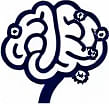Systems Thinking: A Key Mental Model for Better Decision-Making
 by Verner Mayer
by Verner Mayer
Systems Thinking offers a way to view problems as parts of larger wholes, improving decision-making in business and personal life. This mental model helps identify patterns and interconnections, fostering cognitive growth and practical strategies for professionals and learners.

Systems Thinking serves as an essential mental model that examines how elements interact within a whole. This approach helps individuals see beyond isolated events and consider broader patterns. For instance, in business environments, Systems Thinking reveals how changes in one area affect others.
To begin, this mental model focuses on relationships between components. It encourages viewing organizations or processes as interconnected systems rather than separate parts. Professionals often use it to address challenges by mapping out these links, leading to more effective solutions.
In psychology, Systems Thinking applies to human behavior. It looks at how thoughts, emotions, and environments influence each other. For example, stress might stem from workplace dynamics rather than a single event, highlighting the need for holistic interventions.
Benefits in Cognitive Development
This mental model aids lifelong learners by promoting deeper analysis. By recognizing feedback loops, people can anticipate outcomes and adjust strategies accordingly. In education, students apply it to understand social systems, enhancing critical thinking skills.
Business strategies benefit greatly from this approach. Leaders use it to improve operations by identifying inefficiencies in supply chains. For example, a company might find that inventory issues connect to production delays, allowing for targeted improvements.
Practical Applications
Applying Systems Thinking involves several steps. First, map out the system by listing key elements and their interactions. Then, identify leverage points where small changes yield big results. In daily life, this could mean analyzing family routines to resolve conflicts more effectively.
In cognitive development, this model supports personal growth. Individuals track habits and their effects over time, leading to better self-management. For instance, exercise routines might influence sleep patterns, creating a cycle that boosts overall health.
Professionals in various fields find value here. In healthcare, doctors consider patient lifestyles alongside symptoms for comprehensive treatment plans. This integrated view often leads to faster recoveries and preventive measures.
Real-World Examples
Consider environmental issues, where systems interactions are clear. Pollution in one area might impact ecosystems elsewhere, showing the importance of global perspectives. By using this mental model, policymakers create strategies that address root causes rather than symptoms.
In technology, developers apply it to software design. They examine how code components interact to build more reliable systems, reducing errors and improving user experiences.
Challenges and Tips
While helpful, adopting this mental model can require effort. People might overlook connections at first, but practice builds awareness. Start with simple exercises, like drawing diagrams of everyday systems, to build familiarity.
For curious individuals, reading about case studies provides insight. Discussing ideas with peers also reinforces learning, turning abstract concepts into actionable knowledge.
Ultimately, this approach fosters adaptability. As situations change, the ability to see interconnections helps in making informed choices. Whether in psychology or business, it equips people with tools for sustained success.
In summary, embracing this mental model transforms how we approach problems. It encourages a balanced view that supports cognitive development and practical strategies, making it invaluable for professionals and learners alike.
